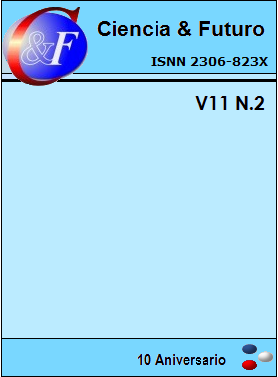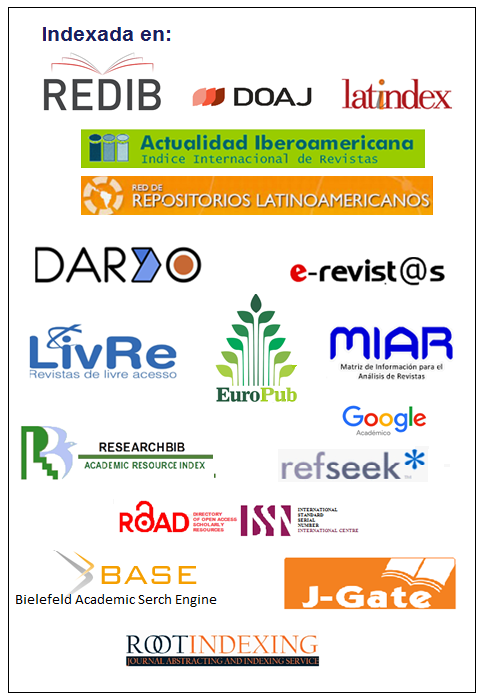Mental flexibility and working memory in Mexican adolescents with antisocial-criminal behavior
Keywords:
Executive functions, dorsolateral prefrontal cortex, adolescence, delinquency.Abstract
Executive functions (EF) and their alterations have been studied and related to antisocial-criminal behavior, but it has mostly been investigated in the adult criminal population, excluding the adolescent population. The objective of the research is to analyze and compare the EFs of mental flexibility and visuospatial working memory in adolescents with antisocial-criminal behavior belonging to a social reintegration center and control adolescents. The Antisocial-Criminal Behavior Questionnaire, the BANFE letter classification test and self-directed pointing were used. Two groups were formed, the study group (SG) of 26 male adolescents belonging to a social reintegration center with ages of 14 to 18 years and education of 5 to 11 years and the control group (CG) equivalent in age, sex and education, not belonging to a social reintegration center. The SG showed difficulties in the functions of mental flexibility and visuospatial working memory compared to the CG. The GE adolescents also showed difficulties in functions that are related to repetitive aggressive behaviors, violation of social norms, problems to correct behavior based on experiences, which may suggest alteration in brain structures such as the dorsolateral prefrontal cortex.Downloads
References
ARDILA, A. Y OSTROSKY, F. 2008. Desarrollo histórico de las funciones ejecutivas. Revista Neuropsicología, Neuropsiquiatría y Neurociencias 8(1): 1–21.
BADDELEY, A. D. 1990. Human memory: Theory and practice. Oxford University Press, Oxford.
BADDELEY, A. D. & LARSEN, J. D. 2007. The phonological loop unmasked? A comment on the evidence for a “perceptual-gestural” alternative. The Quarterly Journal of Experimental Psychology 60(4): 497-504.
BROCHE, Y. & CORTÉS, I. 2015. Toma de decisions en jóvenes con conductas antisociales: evidencias desde el lowa Gambling Task. Neurología argentina 7(3): 140-147.
CAUFFMAN, E.; STEINBERG, L. Y PIQUERO, A. R. 2005. Correlaciones psicológicas, neuropsicológicas y fisiológicas de la conducta antisocial grave en la adolescencia: el papel del autocontrol. Criminology 43(1): 133-176.
COLLETTE, F.; HOGGE, M.; SALMON, E. & VAN DER LINDEN, M. 2006. Exploration of the neural substrates of executive functioning by functional neuroimaging. Neuroscience 139(1): 209-221.
DIAMOND, A.; KIRKHAM, N. & AMSO, D. 2002. Conditions under which young children can hold two rules in mind and inhibit a prepotent response. Developmental Psychology 38(3): 352-62.
FLORES, J.; OSTROSKY, F. & LOZANO, A. 2012. BANFE, Batería Neuropsicológica de Funciones Ejecutivas y Lóbulos Frontales. El Manual Moderno, México.
GAETA, M. L. & GALVANOVSKIS, A. 2011. Propensión a conductas antisociales y delictivas en adolescentes mexicanos. Psicología iberoamericana 19(2). ISSN 1405-0943.
GARCÍA, J.; ZALDÍVAR, F.; DE LA FUENTE, L.; ORTEGA, E. Y SAINZ-CANTERO, B. 2012. El sistema de Justicia Juvenil de Andalucía: descripción y presentación de resultados a través de la investigación empírica. Edupsykhé 11(2): 287-316.
IGLESIAS, J. 2013. Desarrollo del adolescente: aspectos físicos, psicológicos y sociales. Disponible en: https://www.pediatriaintegral.es/numeros-anteriores/publicacion-2013-03/desarrollo-del-adolescente-aspectos-fisicos-psicologicos-y-sociales/
KAZDIN, A. E. & TORO, J. 1988. Tratamiento de la conducta antisocial en la infancia y la adolescencia. Martínez Roca.
LEWINSOHN, P.; ROHDE, P.; SEELEY, J.; KLEIN, D. & GOTLIB, I. 2000. Natural course of adolescent major depressive disorder in a community sample: Predictors of recurrence in young adults. The American Journal of Psychiatry 157(10): 1584-1597.
LURIA, A. 1989. El cerebro en acción. Impresora Cuadratín y Medio, S.A., México, D. F.
MILLER, E. K. & COHEN, J. D. 2001. An integrative theory of prefrontal cortex function. Annual Review of neuroscience 24: 67-202.
MOFFITT, T. E. 1993. La neuropsicología del trastorno de conducta. Desarrollo y psicopatología 5(1-2): 135-151.
ORGANIZACIÓN MUNDIAL DE LA SALUD (OMS). 2003. Informe mundial sobre la violencia y la salud. Washington: OMS.
PINEDA, P. S. Y SANTIAGO, A. M. 2002. El concepto de la adolescencia. En: R. Márquez. (Ed.). Manual de Prácticas Clínicas para la atención integral e la Salud en la Adolescencia (pp. 15-23). MINSAP, Ciudad de La Habana.
PORTELLANO, J. 2005. Introducción a la neuropsicología. Mc Graw Hill, Madrid.
PORTELLANO, J. & GARCÍA, J. 2014. Neuropsicología de la atención, las funciones ejecutivas y la memoria. Síntesis, Madrid.
ROBBINS, T. W. 1998. Dissociating executive functions of the prefrontal cortex. The prefrontal cortex 117-130.
TEICHNER, G. Y GOLDEN, C. J. 2000. La relación del deterioro neuropsicológico con el trastorno de conducta en la adolescencia: una revisión conceptual. Agresión y comportamiento violento 5(6): 509-528.
REYNA, V. F. & FARLEY, F. 2007. El cerebro adolescente. Mente y cerebro 26: 56-63.
SANABRIA, A. M. & URIBE, A. F. 2009. Conductas antisociales y delictivas en adolescentes infractores y no infractores. Pensamiento psicológico 6(13).
SEISDEDOS, N. 1988. Cuestionario AD: conductas antisociales-delictivas: Manual. Tea.
ZELAZO, P. D.; MÜLLER, U.; FRYE, D.; MARCOVITCH, S.; ARGITIS, G.; BOSEOVSKI, J. & CARLSON, S. M. 2003. The development of executive function in early childhood. Monographs of the society for research in child development, i-151.
ZELAZO, P.; QU, L. Y MULLER, U. 2004. Hot and cool aspects of executive function: relations in early development. En: W. Schneider; R. Schumann y B. Sodian (Eds.). Young children’s cognitive development: Interrelationships among executive Junctioning, working memory, verbal ability, and theory of mind. Lawrence Eribaum Associates Publishers, Mahwah, p. 71-93.
Published
How to Cite
Issue
Section
Esta obra está bajo una Licencia Creative Commons Reconocimiento-NoComercial 4.0 Internacional
La Revista Ciencia & Futuro es una revista de acceso abierto, todo el contenido está disponible gratuitamente sin cargo para el usuario o su institución. Los usuarios pueden leer, descargar, copiar, distribuir, imprimir, buscar o vincular los textos completos de los artículos, o utilizarlos para cualquier otro fin lícito, sin pedir permiso previo al editor o al autor. Todo lo anterior, de acuerdo con la definición de BOAI de acceso abierto.
Los autores que publican en esta revista están de acuerdo con los siguientes términos: Licencia Creative Commons Atribución-NoComercial permite que el beneficiario de la licencia tenga el derecho de copiar, distribuir, exhibir y representar la obra y hacer obras derivadas para fines no comerciales siempre y cuando reconozca y cite la obra de la forma especificada por el autor o el licenciante. Los autores pueden establecer por separado acuerdos adicionales para la distribución no exclusiva de la versión de la obra publicada en la revista (por ejemplo, situarlo en un repositorio institucional o publicarlo en un libro), con un reconocimiento de su publicación inicial en esta revista. Se permite y se anima a los autores a difundir sus trabajos electrónicamente (por ejemplo, en repositorios institucionales o en su propio sitio web) antes y durante el proceso de envío, ya que puede dar lugar a intercambios productivos, así como a una citación más temprana y mayor de los trabajos publicados (Véase The Effect of Open Access) (en inglés). Lo anterior debe realizarse siempre sobre el artículo ya publicado por Ciencia & Futuro.
Los autores mantienen el control sobre la integridad de sus trabajos y el derecho a ser adecuadamente reconocidos y citados.
A los editores se les otorgan derechos no exclusivos para publicar y distribuir.




